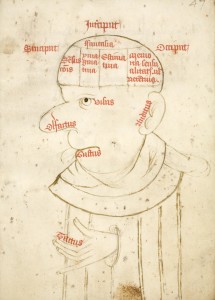Animal, Vegetal, and Mineral: Ambiguity and Efficacy in the Nishapur Wall Paintings
by Finbarr B. Flood
The essay begins:
Between 1935 and 1947 excavations led by the Metropolitan Museum of Art at Nishapur, one of the four great medieval cities of the eastern province of Khurasan, brought to light some of the earliest extant wall paintings of the Islamic period from Iran. These included a remarkable series of painted plaster dadoes found in a rectangular room measuring almost thirty square meters within a large complex identified by the excavators as an administrative or palatial structure, located in a western suburb of Nishapur known as Tepe Madrasa. The iconography of the paintings, which can be dated to the ninth or tenth centuries, is unique; although some antecedent traditions can be identified, the bizarre congeries of leaves, limbs, and scales evoked in the medium of paint at Nishapur is without any immediate parallel in Islamic art. The absence of contemporary epigraphic or textual materials that might shed light upon the idiosyncratic imagery of the paintings compels one to fall back on analogical reasoning, which suggests that the paintings were invested with apotropaic or talismanic properties directly relevant to their strange appearance. Given the lack of any related contextual data, any attempt to analyze the paintings with respect to their proposed apotropaic imagery must necessarily be speculative. Nevertheless, even such a tentative approach to the paintings may be useful in highlighting aspects of the relation between materiality and representation relevant to the efficacious functioning of apotropaiac and talismanic imagery in general. In particular, the unusual conjunction of anthropomorphic, lithic, and vegetal imagery in the Nishapur paintings raises interesting questions about efficacy, ontology, and the apotropaic image, questions underlined by the metaquality of the Nishapur images as painted abstractions of natural forms and media. Continue reading …
A series of enigmatic ninth- or tenth-century wall paintings from Nishapur in eastern Iran seems to have been imbued with amuletic, apotropaic, or talismanic properties. Recapitulating while exaggerating some of the properties of marble, the paintings also include anthropomorphic and vegetal imagery. Their idiosyncratic iconography seems to highlight a tension between physis and technē that may be relevant to the ambiguous ontology of efficacious images in general.
FINBARR B. FLOOD is William R. Kenan Jr. Professor of the Humanities at the Institute of Fine Arts and Department of Art History, New York University. His publications include Objects of Translation: Material Culture and Medieval “Hindu-Muslim” Encounter (2009), which was awarded the 2011 Ananda K. Coomaraswamy Prize of the Association for Asian Studies. He is currently completing a major book project, provisionally entitled Islam and Image: Polemics, Theology, and Modernity. Other projects include a collaborative project entitled Object Histories: Flotsam as Early Globalism, for which he and Professor Beate Fricke, of UC Berkeley, have just been awarded an ACLS Collaborative Grant.

